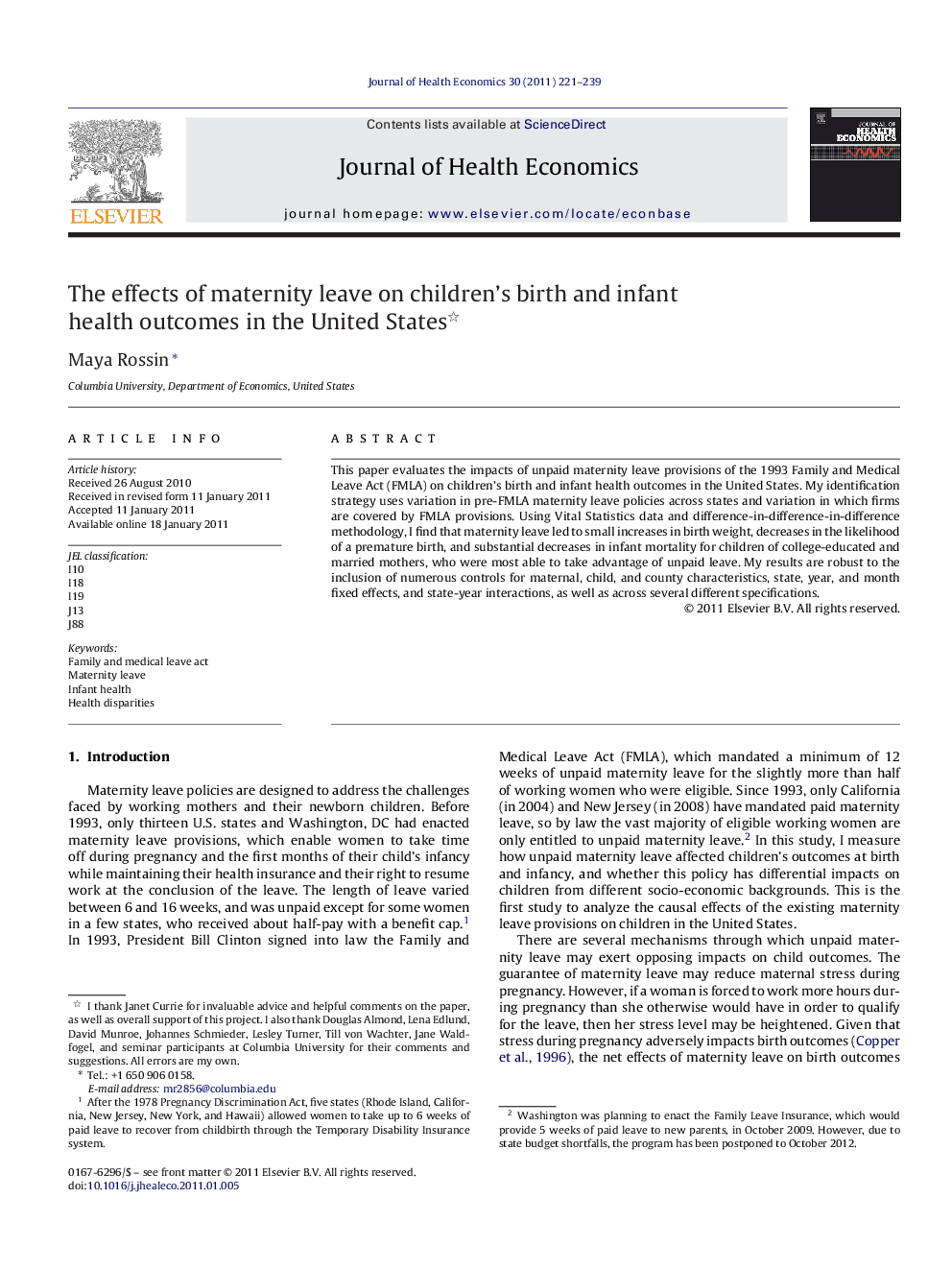| Article ID | Journal | Published Year | Pages | File Type |
|---|---|---|---|---|
| 961539 | Journal of Health Economics | 2011 | 19 Pages |
Abstract
This paper evaluates the impacts of unpaid maternity leave provisions of the 1993 Family and Medical Leave Act (FMLA) on children's birth and infant health outcomes in the United States. My identification strategy uses variation in pre-FMLA maternity leave policies across states and variation in which firms are covered by FMLA provisions. Using Vital Statistics data and difference-in-difference-in-difference methodology, I find that maternity leave led to small increases in birth weight, decreases in the likelihood of a premature birth, and substantial decreases in infant mortality for children of college-educated and married mothers, who were most able to take advantage of unpaid leave. My results are robust to the inclusion of numerous controls for maternal, child, and county characteristics, state, year, and month fixed effects, and state-year interactions, as well as across several different specifications.
Related Topics
Health Sciences
Medicine and Dentistry
Public Health and Health Policy
Authors
Maya Rossin,
